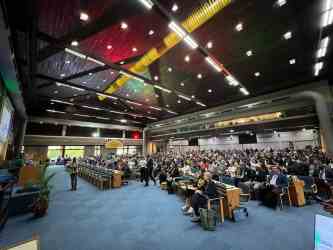
China Holds More Trade War Cards Than Trump Thinks
While the rest of the world would be given a 90-day reprieve on additional duties beyond the new 10% tariffs on all US trade partners, China would feel the squeeze even more. On April 9, 2025, Trump raised the tariff on Chinese goods to 125% .
The move, in Trump's telling, was prompted by Beijing's“lack of respect for global markets.” But the US president may well have been smarting from Beijing's apparent willingness to confront US tariffs head-on.
While many countries opted not to retaliate against Trump's now-delayed reciprocal tariff hikes, instead favoring negotiation and dialogue , Beijing took a different tack. It responded with swift and firm countermeasures.
On April 11, China dismissed Trump's moves as a“joke” and raised its own tariff against the US to 125%. In retaliation, Trump later raised his tariffs on China to 145% before declaring an exemption for certain electronics.
The two economies are now locked in an all-out, high-intensity trade standoff. And China is showing no signs of backing down.
And as an expert on US-China relations, I wouldn't expect China to. Unlike the first US-China trade war during Trump's initial term, when Beijing eagerly sought to negotiate with the US, China now holds far more leverage.
Indeed, Beijing believes it can inflict at least as much damage on the US as vice versa, while at the same time expanding its global position.
A changed calculus for ChinaThere's no doubt that the consequences of tariffs are severe for China's export-oriented manufacturers – especially those in the coastal regions producing furniture, clothing, toys and home appliances for American consumers.

Amid tariffs, China's President Xi Jinping senses a historic opportunity. Photo: Carlos Barria / AFP via Getty Images
But since Trump first launched a tariff increase on China in 2018 , a number of underlying economic factors have significantly shifted Beijing's calculus.
Crucially, the importance of the US market to China's export-driven economy has declined significantly. In 2018, at the start of the first trade war, US-bound exports accounted for 19.8% of China's total exports.
In 2023, that figure had fallen to 12.8% . The tariffs may further prompt China to accelerate its“domestic demand expansion” strategy, unleashing the spending power of its consumers and strengthening its domestic economy.
And while China entered the 2018 trade war in a phase of strong economic growth, the current situation is quite different. Sluggish real estate markets , capital flight and Western“decoupling” have pushed the Chinese economy into a period of persistent slowdown.

Legal Disclaimer:
MENAFN provides the
information “as is” without warranty of any kind. We do not accept
any responsibility or liability for the accuracy, content, images,
videos, licenses, completeness, legality, or reliability of the information
contained in this article. If you have any complaints or copyright
issues related to this article, kindly contact the provider above.




























Comments
No comment